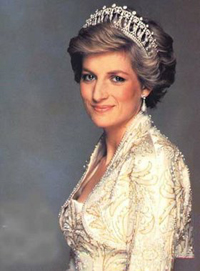Debate continues about photographers' involvement in Princess Diana's death

Photographers who had pursued Princess Diana’s speeding Mercedes through the Paris night were immediately blamed in her death.
Eventually, Paris courts dismissed manslaughter charges against the nine photographers, and investigations concluded that Diana's chauffeur was drunk and speeding. But the case sparked an international debate that has never died down: Where do you draw the line between protecting celebrities and ensuring a free, healthy press?
Emotions ran high in the days after Diana's death, 10 years ago Friday. Charles Spencer, Diana's brother, said he had "always believed the press would kill her in the end." Photojournalists around the world were heckled and hassled, and a female news photographer in Christchurch, New Zealand was even attacked by construction workers.
Last year, a law went into effect in California increasing penalties against "stalkerazzi," inspired by a spat of celebrity car chases. Italy's privacy watchdog has begun threatening prison terms for photographers who run photos or reports on the peccadilloes of the rich and famous.
Neither France nor Britain changed laws governing their media because of the Aug. 31, 1997, crash that killed Diana, her boyfriend Dodi Fayed and their chauffeur, Henri Paul, in the Pont d'Alma traffic tunnel, with photographers on their tail.
But some journalists changed the way they cover the royal family. Ken Lennox, picture editor of Britain's The Sun at the time of Diana's crash, said her death may have helped shield her sons, William and Harry, from the public eye as they grew up.
"We all had this kind of collective guilt because we had been pursuing Diana; there was just no doubt about it," he said. He added, though, that the veil protecting them - and their girlfriends - could not have stayed in place forever.
"If Kate Middleton is going to marry the heir to the throne, we've got know something about her, we've got to see what she's made of," he said.
In France, the former editor of Voici gossip magazine said the celebrity press pledged to "behave better" after Diana's death.
"That lasted a few weeks, and then everyone became much nastier," said Jacques Colin, who took over the magazine's helm after Diana's death. "That kind of press makes a fortune in France, and if people were nice, they would lose money."
Several new French celebrity magazines have burst onto the scene recently, devoting ample coverage to American and British stars - even ones who aren't well-known in France - simply because foreigners sue less often than the French, Colin said.
France has some of Europe's toughest media constraints, which strictly protect privacy and guarantee that suspects are presumed innocent. In 2001, a law went into effect prohibiting photographers from shooting pictures of suspects in handcuffs.
Another law dating back to 1970 makes it an offense to photograph a person in a private place. The strict laws protect celebrities but also "wind up leaving the public badly informed about important subjects," like scandals involving politicians, said Robert Menard, the head of Reporters Without Borders.
Though France's highest court upheld a decision to drop manslaughter charges against the Diana photographers in 2002, their legal battle did not stop there. In a separate case, an appeals court fined three of them a symbolic euro each last year for invasion of privacy for pictures they took that night.
The photographers, whose snapshots were confiscated, said they never intended to publish the images - they simply shot photos because it was their job.
One of them, noted photojournalist Jacques Langevin, told RTL radio recently: "Why should I be able to photograph dying Rwandans during the massacres (of the 1994 genocide) and not Lady Di?"
Another photographer, Fabrice Chassery, filed a complaint in France last month after his images of Diana's car turned up on in a British television documentary and in Italian media this year. Chassery's lawyer, Jean-Louis Pelletier, said the photos were part of the judicial dossier and should have stayed private, adding that they were released without the photographer's knowledge.
Subscribe to Pravda.Ru Telegram channel, Facebook, RSS!


